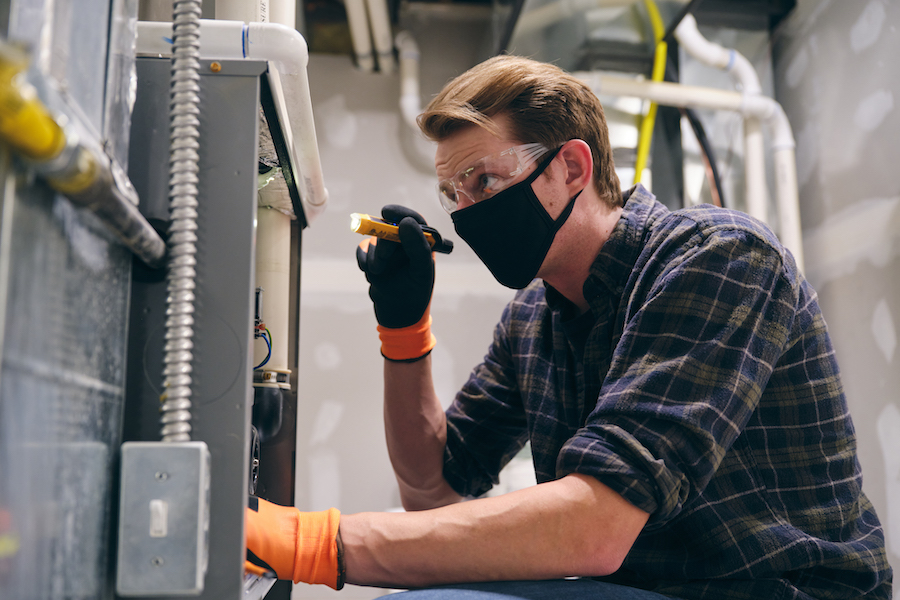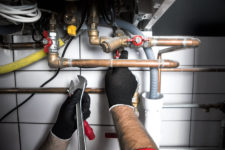Replacing a reactive maintenance strategy with a preventive maintenance program can help building owners and operators drastically reduce their operating expenses.
For example, arranging an annual walk-through of each unit or a regular check on your boilers is far less expensive, not to mention less stressful, than dealing with surprises like hefty damages or malfunctioning equipment.
According to Cushman and Wakefield Senior Director David Auton, running a piece of equipment to the point of failure can cost up to 10x as much as a regular maintenance program would.
That’s because when you are able to spot issues and fix them early, before they get serious, you avoid surprise equipment failures that lead to emergency repair costs, resident dissatisfaction, safety issues, and collateral asset damage — one faulty asset infecting another.
That said, it can be difficult to institute a preventive maintenance program, and there are some common mistakes operators make along the way that can increase the risk of unexpected equipment failure. Let’s go over how to avoid them.
Mistake #1: Not Scheduling Key Inspections
Some property management companies forget to include specific inspections in their program, which can lead to huge risks and costs down the line.
Some examples include:
- Annual Electrical Inspections: Electrical issues account for 24.5% of all reported fires in non-residential buildings, according to Multifamily Insiders.
- Window and Door Inspections: Air leaks that aren’t properly caulked or sealed can cost your building thousands in energy costs.
- Annual Unit Inspections: It’s important to check your units for common issues that can become costly if left to fester. Mold remediation, for example, can cost $3,500 less if you catch it sooner rather than later.
It’s one thing to have these inspection plans in your operating manual, but another entirely to have them scheduled in a work management software that can automatically assign ongoing inspections to the right folks on your staff. That way the work always happens and information never falls through the cracks.
Mistake #2: Failing To Teach & Enforce Your Processes
If there’s no way to assign maintenance routines and track if they’re being done, then they may not happen at all, or at least not in the way you drew up.
Veteran maintenance professionals, although filled with experience, may by habit ignore the best practices you’ve laid out in your standard operating procedures handbook.
And the younger professionals, who used to learn in the now less common culture of apprenticeship, need an easy way to access your preventive maintenance protocols.
You therefore need some mechanism to enforce your preventive maintenance program and ensure it takes flight as you planned.
One example is InCheck’s workflow technology, which guides team members on their mobile devices through maintenance processes, from inspections to repairs, so they always do maintenance on time and according to your best practices, no matter their old habits or knowledge gaps.
Mistake #3: Neglecting Maintenance Data
Managers often lack visibility into what’s happening maintenance-wise at their buildings, and this ignorance can lead to high costs associated with missing chances to address issues early.
To avoid this outcome, you need to track and analyze maintenance data. When every repair, inspection result, and issue is recorded in an online system, you can run reports to uncover insights that help you spot bottlenecks in your program and even predict upcoming maintenance issues.
Tracking data also enables property managers to gauge whether their staff is following the preventive maintenance protocols and completing tasks on time. This visibility allows for more accurate performance assessment and more effective coaching.
Mitigate Risks Before It’s Too Late
Property manager professionals know that one of the biggest risks at properties is equipment damage – especially larger, older, or complicated equipment. Whether it’s from wear and tear, age, or just plain bad luck, equipment repairs can be huge budget busters.
You’re far better off having consistent inspections and fixes to ensure things are running as smoothly as possible.
That said, if you have any questions about how to create, digitize, and enforce this preventive maintenance program, don’t hesitate to reach out to the SiteCompli team. We’re here to help.




